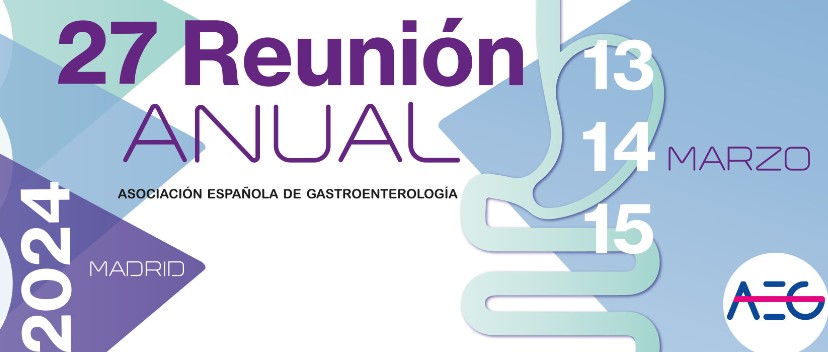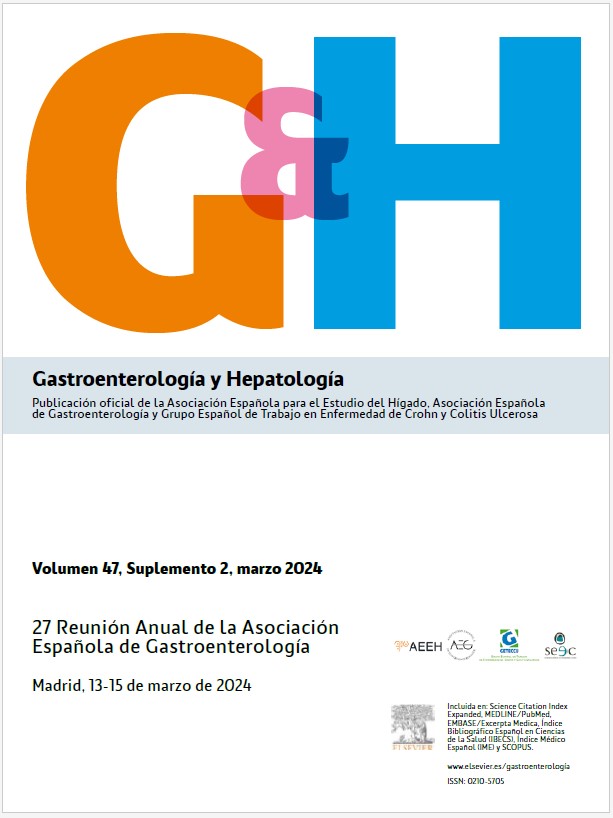PERSISTENT INCREASE IN DUODENAL γδ+ T-CELLS EVALUATED BY FLOW CYTOMETRY: A POTENTIAL BIOMARKER FOR COELIAC PATIENTS STARTED ON A GLUTEN-FREE DIET
1Hospital Universitari Mútua Terrassa. 2Centro de Investigación Biomédica en Red de Enfermedades Hepáticas y Digestivas (CIBERehd). 3CATLAB. 4Hospital Universitario Fundación Jiménez Díaz, Madrid. 5Hospital Clínico San Carlos, Madrid.
Introduction and objectives: The differential diagnosis between patients with coeliac disease (CD) and non- coeliac gluten sensitivity (NCGS) is very difficult when a gluten-free diet (GFD) has already started before doing the diagnostic work-up. The increase in γδ+ T-cell subset appears to be permanent in CD despite a GFD. The coeliac lymphogram (increase in TCRγδ+ > 8.5% plus decrease in CD3- cells < 10%), demonstrated a high accuracy for the diagnosis of CD. A differential pattern in patients with NCGS will allow making the differential diagnosis in this challenging clinical setting. Aims: To evaluate the γδ+ T- cell kynetics at baseline and in the long-term after starting GFD in CD patients (both Marsh 1 and Marsh 3) and in patients with NCGS.
Methods: Descriptive observational longitudinal study. Inclusion criteria: patients diagnosed with CD (target group) and NCGS (control group). An intestinal biopsy for both histology and intraepithelial coeliac lymphogram (TCRγδ+ and CD3-) by flow cytometry was performed at baseline and after starting a GFD with a median follow-up of 2 years (Interquartile range [IQR]: 2-3).
Results: A total of 140 patients were included: 90 Marsh 3, 15 Marsh 1 seropositive and 35 NCGS (seronegative, Marsh 0 < 25% intraepithelial lymphocytes). Ninety-one percent of Marsh 3 and 93.3% of Marsh 1 patients maintained increased TCRγδ+ subset in the long-term, without differences between the duration of GFD (median of 1, 2 and 5 years after starting a GFD), and despite most patients were on clinical (88.2%), serological (78.2%), and histological remission (82.9%) (TCRγδ+ before and after GFD 22.7% [IQR, 15.6-33.8] vs. 26.6% (IQR, 17.2-36.9]; p = 0.029). Sixty-three percent of NCGS had TCRγδ+ cells in the normal range (< 8.5%) in the long-term. TCRγδ+ before and after GFD (8.8% [IQR, 3.8–14.6] vs. 6.1% [IQR, 2.8–11.0]; p = 0.05).
Conclusions: TCRγδ+ T-cells showed a sustained increase in the long-term even after clinical, serological, and histological remission in patients with CD but not with NCGS. We suggest the potential usefulness of this marker for the differential diagnosis between the two entities in patients that have already started a GFD, establishing the TCRγδ+ cut off value of normality to < 14%.









